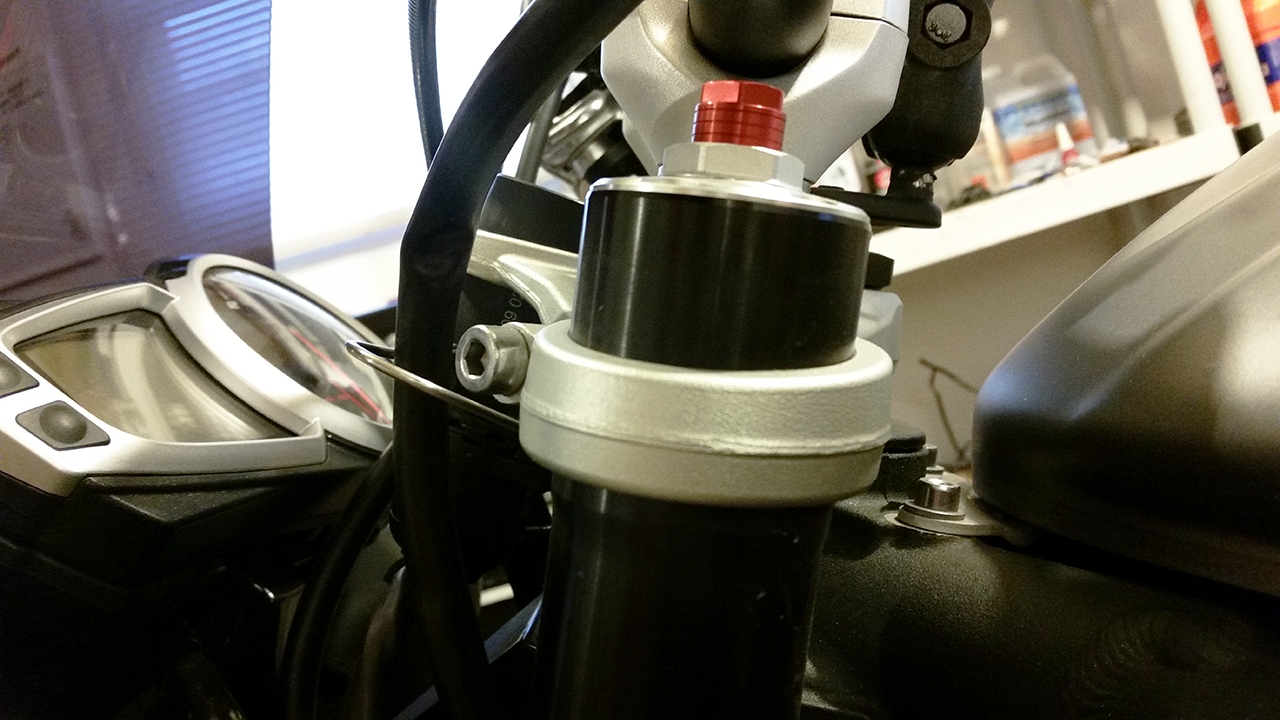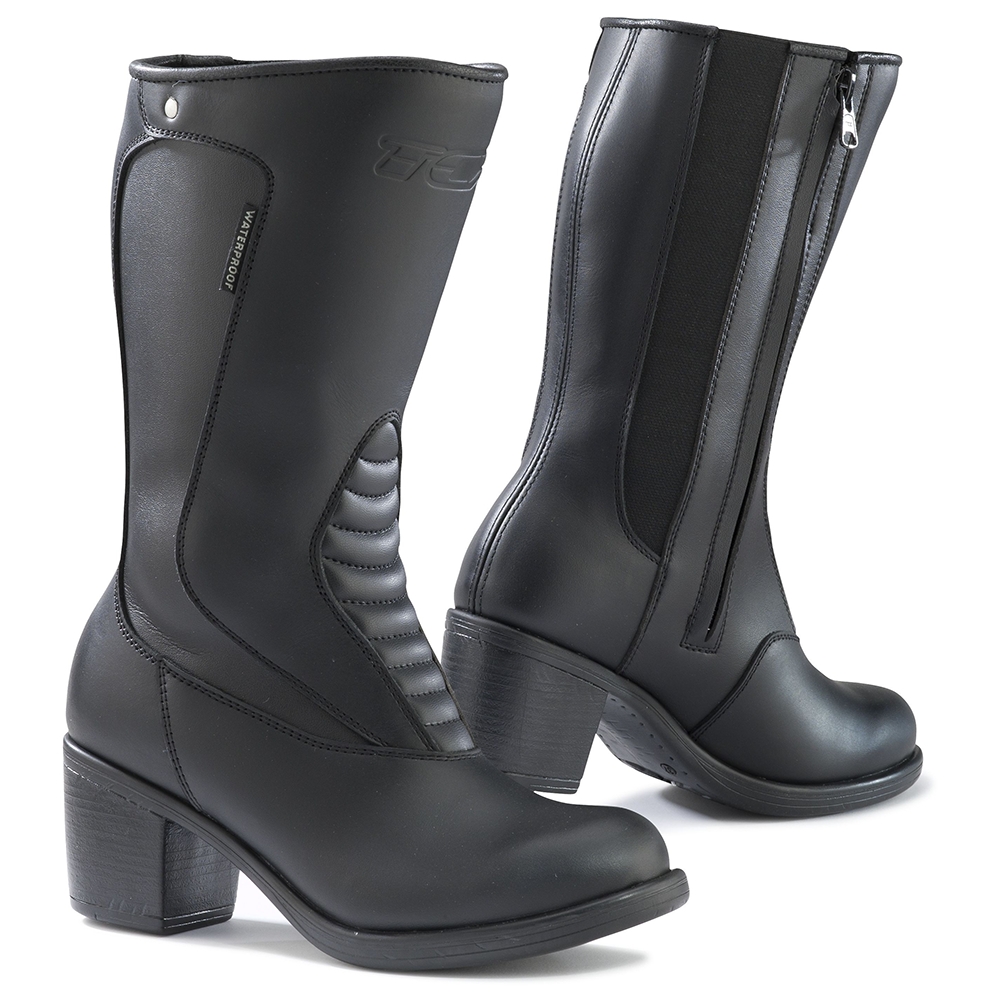Our FTC disclosure's magnum opus awaits here. The following article was last updated on Dec 1, 2025 ...
Short Riders Unite! (Industry Versus Inseam)
TRO writer Margaret Dean's extensive research and gravitation toward the purchase of a brand-new, 2016 Triumph Street Triple R is a perfect example of just how difficult exploratory testing can be. Anyone with Craigslist, CycleTrader or eBay window shopping experience knows that eventually that folder in their bookmarks (the one that's teeming with "my next bike" placeholders) is going to require a budget reminiscent of one Mr. Jay Leno to obtain. Compound these mid-work eye-catchers with a 28" inseam and all roads point to either "not" a sportbike or less than 500cc.
“Lower suspension makes a tall bike feel friendly. Shorter riders get steadier stops while the handling stays calm and quick.”
Short(er) people everywhere want their rides to access the same torque-centered performance outlets as the rest of their riding buddies but with respect for individual taste, the limited options are stifling at best. Every rider short, tall and in between wants that beautiful bike they saw from afar to end up being an excellent fit but more often than not it's the "vertically challenged" who take the brunt of ergonomic inaccessibility's punch. Fear not, however, for solutions are hiding in the aftermarket.
Ahhh, the aftermarket. This maze of geometric manipulation can alter the behavior of any motorcycle for better or worse. Its darkest corners expose a jagged underbelly that's ripe with negative third-party opinion, generally bad decision-making and the questionable installation of prospectively dangerous products. On the upside, remember that it's not what you do. It's how you do it and with careful data mining and forum networking, worthwhile solutions are within reach.
Lower suspension kits, seat mods and control tweaks all live here, the trick being to choose parts that preserve handling while offering better fitment.
How A Bad Motorcycle Dealership Tries To "Sell" You
Having her homework completely in check, my wife (Mrs. Dean, mentioned above) knows what she does and doesn't like. Together we've discussed Yamaha's FZ6R, Suzuki's SV650 and Honda's CB500F. Each carries a displacement she's comfortable with while leaving room for modification including the option to lower suspension if needed.
Unfortunately, we found ourselves at one of "dem dare" distributors. When approaching a stereotypically impolite (and likely book-cooking) dealership, some loud-mouthed salesperson might attempt to cut through your collected data as if to test your dedication to it. This isn't their job and such communications are a sign of some financial cavity in their business model. It gets worse if they aren't interested in helping. The response in such cases often arrives generically at:
“We know better. What you're looking for doesn't exist. You should want something else.”
Anyone using the words above, in any order, is worth sidestepping completely. I mean, here you are at the source, ready to purchase a brand-new motorcycle that's perhaps only barely outside of your physical comfort zone. You've sought out and itemized remedies but at first mention, the salesperson cuts you off and pushes a solution that expects you (the customer) to tolerate the bike as-is or settle for cruisers and lower-displacement learner bikes instead of discussing how to lower suspension correctly. Cite your research. Make the sales rep work!
They don't know anything about you, so any attempt to "inform" you about what can or can't be done is ill conceived. You know which bikes you like and you've eliminated all models that simply aren't modification friendly. Your remaining prospects shine bright and you can see your end goal.
Why An Effective Motorcycle Safety Course Mentions Stability
As of this publishing date, the "foundation of safety in motorized bicycling" (that I'm in no way allowed to directly mention or represent the opinions of, even as a RiderCoach) plainly states that new and experienced riders should buy motorcycles that fit them well. A rider should plant their boot heels firmly on both sides at every stop, keeping some remaining reach in case of an uneven surface. In short, while we don't want a motorcycle that's cramped enough to put our knees next to our ears, we should feel little if any stress maintaining balance when the bike isn't in motion.
Riders with a surplus of moxie and gusto have no doubt found ways around such a recommendation without modifying their ride. It's a uniquely character-driven choice that's not for everyone. Side straddling your seat or jumping on and off at every intersection takes practice.
Before I continue shoveling to the other side of the globe in a rant about you deserving a motorcycle that looks, performs and fits to your liking, watch the video above. There are shorter folks who have gotten on bigger bikes and made do Triumphantly (get it?). It's pretty impressive really and if you choose to go that route, do so with confidence and take pride in your decision.
The expertise of Hien Tran over at VotoCycling comes to mind ... but again this solution ain't for all.
What An Honest Motorcycle Dealership Can Provide
There are no problems, only solutions. Matthew Thrun over at Woodstock Triumph made it abundantly clear that not only does he understand this, he believes it. Mr. Thrun heard me out regarding what we were after, warned us whenever there was good reason for it and helped us hurdle mountains wherever they stood tallest.
Knowing what you want and learning how to get it takes patience. If modification is your preferred plan, look over your prospective motorcycle and visualize (responsibly) opportune areas where change might prove beneficial. Seek out reputable parts from well-known manufacturers or popular third-party machinists. Not sure where to start? Let's look at the best moto-mod options ...
Before We Lower Suspension, Let's Lower (Shave) Our Motorcycle Seat
The first and easiest thing a rider can do if they only need slightly better footing is shave their motorcycle's seat. The process isn't complicated and also saves money. Should you opt to go big with the effort, you can customize your seat extensively to your exact specifications.
The image above shows my stock seat (left/top) and her shaved seat (right/bottom).
Shaving your motorcycle seat doesn't sacrifice comfort either. More often than not, there's enough foam left over that a complete cushion replacement isn't necessary. Should you need it, however, you can choose from an enormously extensive range of cushioning materials and pair the result with a plan to lower suspension for additional reach.
Okay, Then ... Lower Suspension
Now we're entering complicated territory, that being your motorcycle's geometry. Consider overall handling, control response and ground clearance with every turn of the wrench. For each alteration applied to its three-dimensional makeup, somewhere opposite that adjustment is a mechanical "yang" made from riddles and moto-physics voodoo.
If we lower only the front suspension, which involves loosening the triple trees around the forks and sliding them upward, thereby bringing the front end downward, we shift the angle of the fork tubes (commonly referred to as "rake") closer to a 90° position. This makes steering more twitchy and not necessarily in a good way. The motorbike feels paranoid, changing direction on a whim; a reminder to lower suspension evenly rather than at one end.
At the same time, if we only lower the rear suspension, turning becomes a lumbering process and even the most animate of body language won't help. Anything a rider might normally do now falls more steeply onto the rear wheel. We're asking the back end to break loose and kick out as it normally might within such an angle/torque combination.
The key to lowering any motorcycle suspension is to do so evenly/equally on both the front and rear. With a few sober hands at the ready and a focused goal, this shouldn't take more than an hour. Check the clearance between your fork tubes and handlebars as you might need risers when you lower suspension further than stock tolerances.
First, measure and write down the following figures (before adjusting):
- Current Rake Angle
- Distance Between Front End and Ground
- Distance Between Back End and Ground
Adjust as needed and assuming you've safely respected the integrity of the parts, re-measure using the same reference points and write down the resulting figures next to your original results. Your motorcycle's rake should be nearly identical to what it was originally. Also, subtracting figure 2 from figure 3 for both sets of data should return equal or similar results when you lower suspension correctly.
The point is for your rake and front/rear distance-to-ground ratio to be unaltered (or minimally if so). Yes, there's still the matter of it being easier for you to scrape pegs at a low lean angle but at least the handling will feel more natural as per the design. Fortunately in the case of the Triumph Street Triple R, the pegs are already high and there's plenty of clearance to work with.
You're not done yet, though! Because your motorcycle's chassis now sits closer to the pavement, adjust your suspension to suit. Also, you're going to need a custom adjustable side stand.
Try/Buy Motorcycle Boots For Short Riders
If you need 'em, you can still squeeze out a few millimeters to gain greater stability while stopped. It's all about the boots and alternatively, sole inserts. Whichever you choose, be sure they actually help rather than harm your ability to ride (think Gene Simmons).
In the case of Mrs. Dean, a pair of TCX Lady Classic WP Boots brought it all together. In combination with her heavily modified motorcycle, she's more heel down than not at every stop. It took "all of the above" but stylish and comfortable boots are a favorite of hers anyhow.
Gents, if wearing a deep-heeled boot doesn't appeal to your sense of fashion, custom insoles may be the way to go (you'll need a bigger boot). Many of these provide multi-tiered (layered) versions so you can adjust the added height accordingly. No, they don't make any with low rider hydraulics.
Motorcycle Engine Covers And Frame Sliders
After all is said and done, you've gone to great lengths to prepare yourself and your motorcycle for greater comfort. Whether you feel totally stable and better secured or not, it's probably best that you protect your investment. Frame sliders and engine case covers may not be cheap but they're certainly less expensive than the engine itself!
Motorcycle Dealerships And Lowering Suspension Summary
So there you have it! Finding the right motorcycle dealership comes first. If you're not comfortable wrenching (or in my case just not in the mood), working with their service department comes next.
A shaved seat, equally lowered and load-balanced suspension, heeled boots, and/or lifted insoles are all ways to get that dream bike you've always wanted to have a more solid standing. While the above information isn't necessarily applicable to every bike, you're sure to find a few in the mix of available models which are ready and waiting for such modifications, especially if you plan to lower suspension without compromising geometry. It's a matter of doing the homework and ignoring all who obviously haven't done theirs.
Keep safety first. Not every aftermarket product is worth buying. Ask around and read the reviews!

How Have You Modified Your Motorcycle For Greater Stability And Comfort?
Every motorbike has its known modifications. Which ones have you implemented? How has it affected your riding and why? Your input is invited. Leave a comment and/or write an article!


















Thoughts gone wild? Write an article!